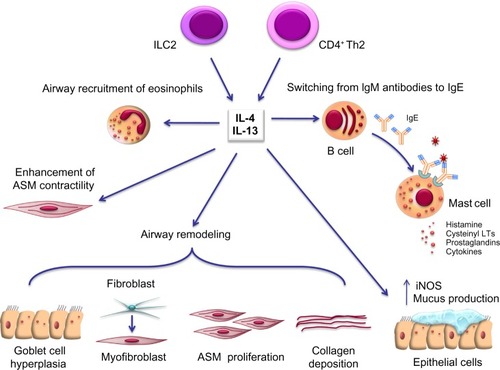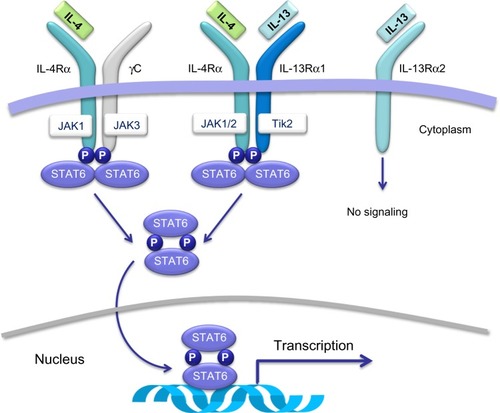Figures & data
Figure 1 Pleiotropic effects of IL-4 and IL-13 in asthma pathobiology. See text for details.
Abbreviations: ASM, airway smooth muscle; IL, interleukin; LTs, leukotrienes; iNOS, inducible nitric oxide synthase.

Figure 2 Membrane receptors and intracellular signaling pathways activated by IL-4 and/or IL-13. IL-4 and IL-13 exert their biological actions by activating a heterodimeric receptor complex consisting of the IL-4 receptor α-subunit (IL-4Rα) and the IL-13 receptor α1-subunit (IL-13Rα1).
Abbreviations: IL, interleukin; JAK, Janus kinase; P, phosphorylation; STAT6, signal transducer and activator of transcription 6; Tik2, tyrosine kinase 2.

